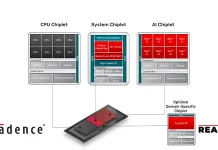In the world of adhesives, some materials match the versatility and strength of epoxy adhesives. These incredible bonding solutions have revolutionized many industries. Construction, automotive, electronics, and aerospace are some industries revolutionized by these adhesives.
According to a recent report by Extrapolate, the global epoxy adhesive market size is expected to reach $15.42 billion by 2030. As the popularity of these adhesives grows, it is essential to understand their characteristics, applications, and factors to consider when choosing epoxy adhesives.
In this article, let’s have a look at the benefits, applications, and things to consider while selecting the right adhesive:
What are Epoxy Adhesives?
A thermosetting adhesive prepared from resin or epoxy polymer and a hardener that is utilized to join a wide range of surfaces together are referred to as Epoxy adhesives. Epoxy glue is used to join surfaces with a strong, permanent, and robust bond that can withstand extreme stress and weather conditions. These adhesives are the most adaptable structural adhesives that are widely used in the industrial sector.
When cured, its tenacity and capability to bond to a wide range of surfaces make it a valuable product. Moreover, epoxy resin glue solutions can be easily customized to meet the specific requirements of each project. These adhesives are prepared from multiple epoxy adhesive resin types that determine the glue’s fundamental features.
Benefits of Epoxy Adhesive in Business Environments
Adhesives that have epoxy groups in their chemical formulations have several advantages. These adhesives can be easily modified to give them the required properties. All epoxies have a few common characteristics, including:
- Resistance to Chemical Exposure: All epoxy resins resist chemical exposure more effectively than the other alternatives available. However, epoxies can resist even harsh chemicals with the right modifications.
- Resistance to Heat: These adhesives are heat-resistant by nature because of the chemical composition of epoxy. Their heat resistance can be enhanced with proper modifications to the formula. Generally, 200°C (390°F) is the heat resistance capacity of epoxy adhesives. Notably, heat-proof epoxy resin types are available in the market that can withstand even higher temperatures.
- Durability and Final Strength: Epoxy bonds, once cured, are one of the strongest bonds for industrial applications. These bonds retain stability for a long time. The strongest epoxy systems are the industrial epoxy adhesive systems, which are made of various resins.
- Electrical Insulation: Electrical insulation of epoxy adhesives is one of the most desirable properties. The electrical properties of this adhesive make it perfect for application on printed circuit boards.
- Watertightness: Epoxy adhesives make strong bonds and effectively seal any surface. They are widely used to make joints and gaps watertight.
Major Applications of Epoxy Adhesive in Multiple Industries
Following are a few key applications of adhesives in various industries:
- Bonding:
Epoxy adhesives are utilized for bonding materials in multiple industries. Bonding is a technique that uses suitable adhesives to join two surfaces. Industries like medical, food, optical, electronics, chemical, and oil and gas use adhesives to bond a wide range of materials, including plastics, rubbers, metals, ceramics, glass, and composites.
- Sealing:
Sealants are considered the perfect solution for filling gaps and cavities to prevent fluids, dust particles, and dirt from entering or getting out of the system. Industries including electronic, optical, oil and gas, chemical, aerospace, automotive, and specialty OEM use sealants to block dust and other particles from entering the systems.
- Coating:
Coatings find vast applications in aerospace and electronic conformal coatings. Epoxy adhesives also have a certain level of application in the OEM, oil, and chemical industries. The industrial application of adhesive coatings offers top-notch protection against chemicals, dust, and moisture. Additionally, coatings help minimize friction, enhance abrasion resistance, and offer EMI/RFI shielding.
- Potting:
The electronic industry uses potting or encapsulation techniques to cover small or large electrical components integrated inside a housing system with an appropriate potting material. This process is done to resist high temperatures and protect the circuits from moisture, dust, dirt, and other harsh conditions. Electronic and microelectronic components like transformers, capacitors, sensors, motors, coils, switches, connectors, power supplies, and cable harnesses use potting and encapsulation methods.
- Impregnation:
Impregnation is a technique utilized to wet multiple fibers, like glass, carbon, kevlar, and aramid. After the fibers get saturated in the resins, they are allowed to completely cure in place, creating a composite substrate. The electronics, electrical, aerospace, and windmill industries widely use these impregnated composite surfaces.
Things to Consider While Selecting the Right Epoxy Adhesives
Let us look at certain factors that should be considered while selecting the right adhesives:
- Service Conditions
The impact of the bond strength depends on various conditions like temperature, chemical fluids, moisture, and outside weathering. It is crucial to test the adhesives under simulated service conditions where probable degrading factors exist.
● Application Methods
While evaluating adhesives, it is essential to know how they operate not only from the performance perspective but also from the production perspective. Following are the two questions that need to be answered before making the right decision:
- Which technique is used to apply the material?
- What type of system is it? Is it a one- or two-component system?
Thoughtful prior considerations of extracting, mixing, and applying will help substantially save money and time in the long run. As a result of early consideration of the application methods, there will be fewer or zero production delays.
● Curing Speed
If you want to make the right epoxy adhesive decision based on its performance for a specific application, it is crucial to understand the right cure schedule. Here are a few guidelines to consider:
- A few epoxies, polyurethanes, and silicones can be cured at room temperature while some other epoxies need high temperatures to initiate the chemical curing reaction. It is important to understand whether it is possible for the application to resist high temperatures.
- UV heals fast when exposed to a suitable wavelength and light intensity. One-component adhesives work effectively in a variety of applications, wherein glass or plastic can pass UV or visible light to the bond line.
It is essential to understand the needs and curing speed before making the right decision for epoxy adhesives.
Gluing it up!
Epoxy adhesives offer efficient adherence to a vast range of surfaces and are widely used as structural adhesives. These adhesives can be cured at ambient or high temperatures, or through UV light radiation, depending on the type of curing agent used. Various epoxy adhesives have been widely used in multiple industrial productions and applications, such as for bonding metals, glass, ceramics, concrete, plastics, wood, and other materials.
Browse More Posts:-
Broadcasting Cameras Market
Sports Technology Market
Functional Cosmetics Market
Airlines Market



